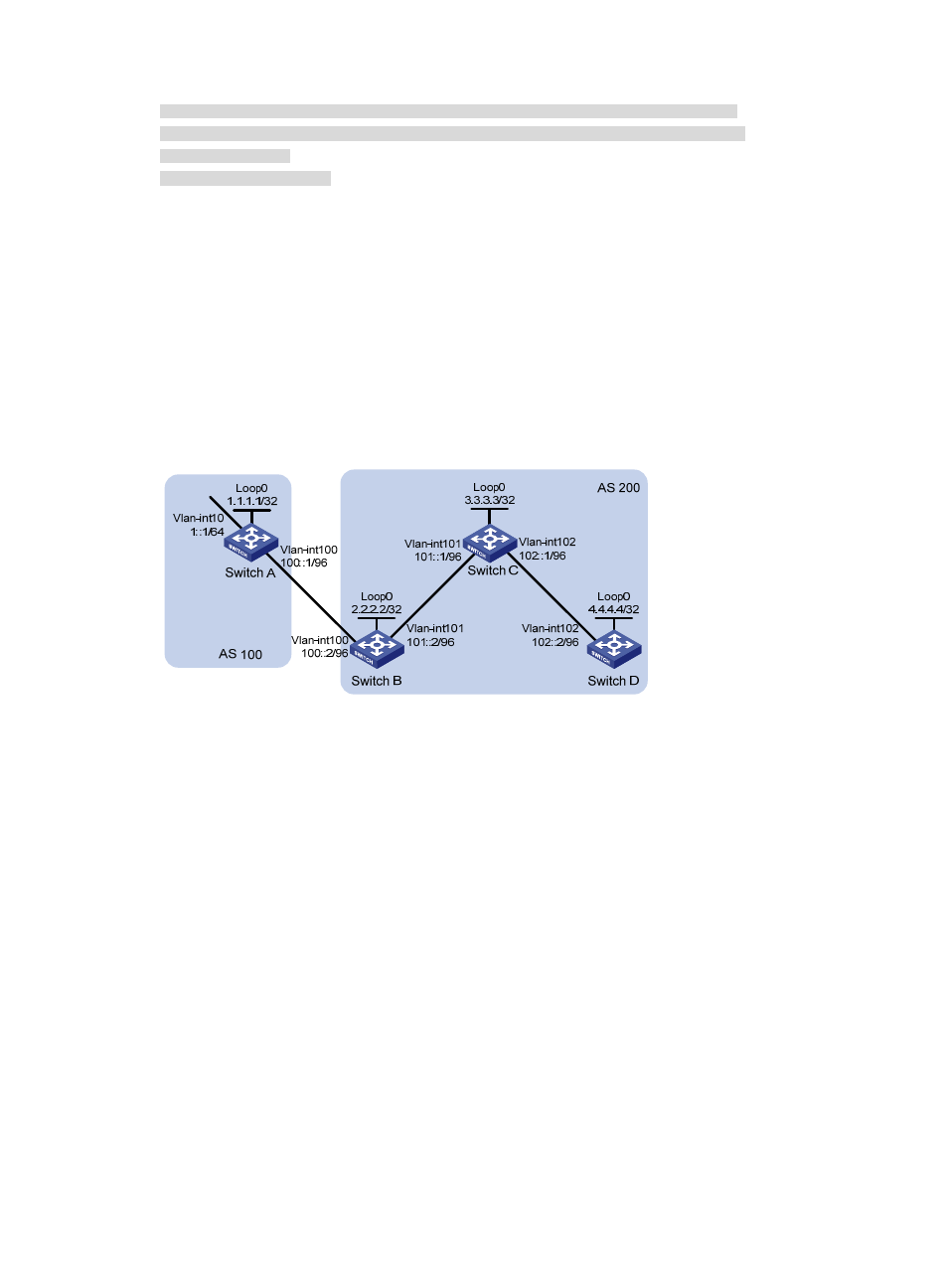Ipv6 bgp route reflector configuration example, Network requirements, Configuration procedure – H3C Technologies H3C S5560 Series Switches User Manual
Page 324

308
NextHop : 10::2 LocPrf : 100
PrefVal : 0 OutLabel : NULL
MED : 0
Path/Ogn: 65008i
The output shows that Switch C has learned the route 50::/64.
# Verify that Switch C can ping hosts on network 50::/64. (Details not shown.)
IPv6 BGP route reflector configuration example
Network requirements
As shown in
, run EBGP between Switch A and Switch B, run IBGP between Switch C and
Switch B, and between Switch C and Switch D.
Configure Switch C as a route reflector with clients Switch B and Switch D.
Figure 75 Network diagram
Configuration procedure
1.
Configure IPv6 addresses for interfaces and IPv4 addresses for loopback interfaces. (Details not
shown.)
2.
Configure IBGP and EBGP connections and advertise network routes through IPv6 BGP:
# Configure Switch A.
<SwitchA> system-view
[SwitchA] bgp 100
[SwitchA-bgp] router-id 1.1.1.1
[SwitchA-bgp] peer 100::2 as-number 200
[SwitchA-bgp] address-family ipv6
[SwitchA-bgp-ipv6] peer 100::2 enable
[SwitchA-bgp-ipv6] network 1:: 64
[SwitchA-bgp-ipv6] network 100:: 96
[SwitchA-bgp-ipv6] quit
[SwitchA-bgp] quit
# Configure Switch B
<SwitchB> system-view
[SwitchB] bgp 200
[SwitchB-bgp] router-id 2.2.2.2